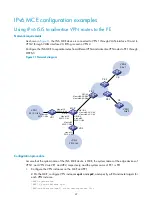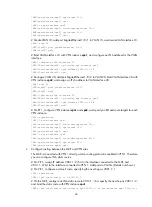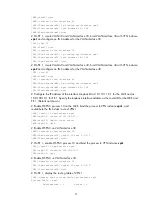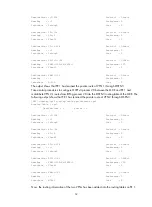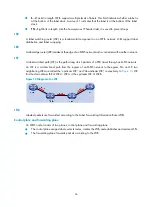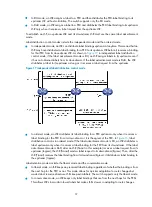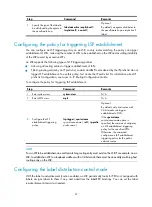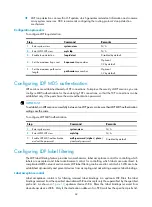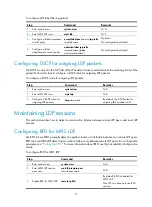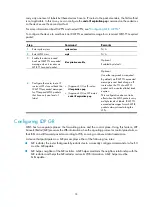
59
2.
Upon receiving the labeled packet, Router C looks for the ILM entry that contains the label 40 to
get the Token value. Because the Token value is not empty, Router C looks for the corresponding
NHLFE entry containing the Token value. According to the NHLFE entry, Router C swaps the
original label with label 50, and then forwards the labeled packet to the next hop LSR (Router D)
through the outgoing interface.
3.
Upon receiving the labeled packet, Router D (the egress) looks for the ILM entry according to the
label (50) to get the Token value. Because the Token is empty, Router D removes the label from the
packet. If the ILM entry records the outgoing interface, Router D forwards the packet through the
outgoing interface. If no outgoing interface is recorded, router D forwards the packet according to
the IP header of the packet.
PHP
In an MPLS network, when an egress node receives a labeled packet, it looks up the LFIB, pops the label
of the packet, and then performs the next level label forwarding or performs IP forwarding. The egress
node needs to do two forwarding table lookups to forward a packet: looks up the LFIB twice, or looks up
the LFIB once and the FIB once.
The penultimate hop popping (PHP) feature can pop the label at the penultimate node to relieve the
egress of the label operation burden.
PHP is configured on the egress node. The label assigned by a PHP-capable egress node to the
penultimate hop can be one of the following:
•
IPv4 explicit null label 0
—The egress assigns an IPv4 explicit null label to a FEC and advertises the
FEC-label binding to the upstream LSR. When forwarding an MPLS packet, the upstream LSR
replaces the label at the stack top with the explicit null label and then sends the packet to the egress.
When the egress receives the packet, which carries a label of 0, it does not look up for the LFIB entry
but pops the label stack directly and performs IPv4 forwarding.
•
Implicit null label 3
—This label never appears in the label stack. The upstream LSR directly performs
a pop operation to the labeled packets that match the implicit null label rather than substitutes the
implicit null label for the original label at the stack top, and forwards the packet to the downstream
egress LSR. The egress directly performs the next level forwarding upon receiving the packet.
Queue scheduling for MPLS
Queue scheduling uses a resource scheduling policy to determine the packet forwarding sequence when
network congestion occurs.
To implement priority mapping and queue scheduling for packets:
•
In an MPLS network, you must configure the trusted packet priority type as 802.1p or DSCP for the
interfaces that forward the packets on MPLS-enabled devices. For more information about priority
mapping and queue scheduling, see
ACL and QoS Configuration Guide
.
•
In an MPLS L2VPN, VPLS, or MPLS L3VPN environment, you must also configure the trusted packet
priority type as 802.1p or DSCP for the interfaces that forward the packets on CE devices. For more
information about CE devices, see "
."
LDP
LDP is used to establish LSPs dynamically. Using LDP, LSRs can map network layer routing information to
data link layer switching paths.



